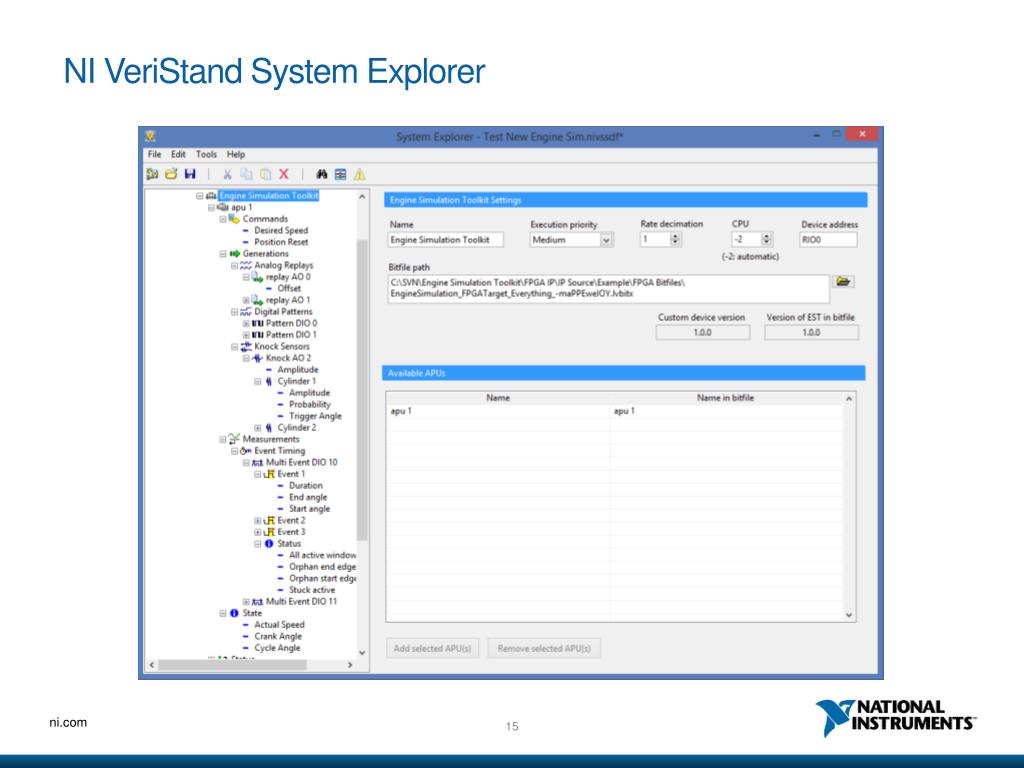

- #Ni fpga simulation how to#
- #Ni fpga simulation code#
Completely custom bitfile eliminates use of any of the Academic RIO Device toolkit Express VIs, however, it is possible to edit the default personality to keep the necessary functionality while adding your own. Restricted palette of built-in functions and limitations on supported data types. Obtain cycle-accurate jitter-free timing with 25-ns clock period (40MHz clock) derived clock domains provide shorter or longer clock periods, i.e., it is possible for some process loops to operate at even higher clock frequencies. Off-load computational effort from the RT target manage low-level details to simplify the RT VI design. 
 Execute an algorithm faster than what is possible on the RT VI, e.g., real-time data acquisition and signal processing, and massive parallelism. Interfacing to equipment that does not use a standard data comm protocol such as I2C, SPI, and UART and which has specific timing and handshaking requirements that would be difficult or impossible to implement with the RT VI, e.g., VGA display, IR remote control for television, and MIDI ports (baud rate not supported by UART Express VI). The FPGA sampling rate defaults to 50-kHZ but can go considerably higher, thanks to the high-speed processing offered by the FPGA target.
Execute an algorithm faster than what is possible on the RT VI, e.g., real-time data acquisition and signal processing, and massive parallelism. Interfacing to equipment that does not use a standard data comm protocol such as I2C, SPI, and UART and which has specific timing and handshaking requirements that would be difficult or impossible to implement with the RT VI, e.g., VGA display, IR remote control for television, and MIDI ports (baud rate not supported by UART Express VI). The FPGA sampling rate defaults to 50-kHZ but can go considerably higher, thanks to the high-speed processing offered by the FPGA target. #Ni fpga simulation how to#
This audio streaming and real-time processing application example illustrates how to create a custom FPGA VI that samples the Academic RIO Device stereo audio input, sends blocks of samples (“audio frames”) to the RT for processing, and plays the processed audio frames on the Device audio output.
#Ni fpga simulation code#
Compiling (building) the FPGA bitfile is a relatively long process (at least 5 minutes or so), therefore use simulation techniques to debug your code before committing to a build. Modify the default Device FPGA personality to add your own functionality while retaining some or all of the existing functionality. Create your own FPGA personality when you have no need of any of the functionality provided by the Academic RIO Device Toolkit, e.g., Express VIs for digital I/O, analog I/O, SPI and I2C communication, etc., or. Develop an FPGA VI when you need a capability that does not exist in the Academic RIO Device Toolkit and default FPGA personality:.







 0 kommentar(er)
0 kommentar(er)
